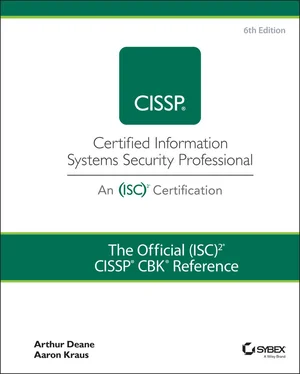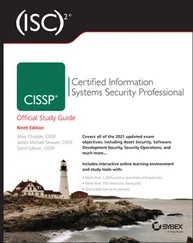U.S. Intelligence Reform and Terrorism Prevention Act of 2004
The Intelligence Reform and Terrorism Prevention Act of 2004 established the National Counterterrorism Center (NCTC) and the position of the Director of National Intelligence (DNI). Under this law, the Department of Homeland Security and other U.S. government agencies are required to share intelligence information to help prevent terrorist acts against the United States. This act also established the Privacy and Civil Liberties Oversight Board with the intent of protecting the privacy and civil liberties of U.S. citizens.
The Council of Europe's Convention on Cybercrime of 2001
The Convention on Cybercrime, also known as the Budapest Convention, is the first international treaty established to address cybercrime. The treaty was first signed in 2001 and became effective in 2004, and has since been signed by more than 65 nations (the United States ratified the treaty in 2006). The treaty aims to increase cooperation among nations and establish more consistent national laws related to preventing and prosecuting cybercrime.
The Computer Misuse Act 1990 (U.K.)
The Computer Misuse Act came into effect in the United Kingdom in 1990 and introduced five offenses related to cybercrime:
Unauthorized access to computer material
Unauthorized access with intent to commit or facilitate commission of further offenses
Unauthorized acts with intent to impair, or with recklessness as to impairing, operation of computer, etc.
Unauthorized acts causing, or creating risk of, serious damage
Making, supplying, or obtaining articles for use in other offenses
Information Technology Act of 2000 (India)
The Information Technology Act was passed by the Indian Parliament in 2000 and amended in 2008. The act established legal recognition of electronic documents and digital signatures, while it also established definitions and penalties for cybercrimes such as data theft, identity theft, child pornography, and cyber terrorism.
Cybercrime Act 2001 (Australia)
The Cybercrime Act 2001 was Australia's response to the September 11, 2001, terror attacks in the United States. The Cybercrime Act 2001 defined serious computer offenses such as unauthorized access, unauthorized modification, and unauthorized impairment of electronic communication, and also established penalties for such crimes.
Licensing and Intellectual Property Requirements
Despite the growing list of cybercrime laws that exist today, it's still fairly difficult to legally define and prosecute computer crimes. As a result, many prosecutors fall back on traditional criminal law concepts such as theft and fraud. No matter what organization you work for, there is a good chance that you have some sort of IP that needs to be protected against theft and fraud. IP may include software, data, multimedia content like music and movies, algorithms, drawings, and so much more. As a CISSP, it is your job to protect all forms of IP.
There are various organizations around the world that establish and protect IP rights; among them are the World Trade Organization (WTO), World Customs Organization (WCO), and the World Intellectual Property Organization (WIPO).
There are numerous intellectual property laws and regulations in the United States, and they fit into five categories:
Licensing
Patents
Trademarks
Copyrights
Trade secrets
Legal protections over intellectual property allow creators and inventors to profit from their work. Unfortunately, the ease with which information can be duplicated and transmitted has made it easier for people to copy information in violation of the legitimate owner's rights.
From an economic perspective, the effect is tremendous. By 2022, the global trade in counterfeited and pirated products, both physical and online, will grow to between 1.9 and 2.8 trillion dollars. Estimates by the Business Software Alliance (BSA) suggest that more than 40 percent of the software in use worldwide is not properly licensed.
Counterfeit goods also present significant economic as well as physical risks. A $460 billion–a–year industry, counterfeiting has been simplified by the e-commerce platforms and expedited international shipping, which has accompanied the lowering of trade barriers. The secondary impacts of illegal use of intellectual property are equally surprising. One estimate suggests that 23 percent of all bandwidth is consumed by activities that infringe on intellectual property.
While emerging technologies present opportunities for improving licensing methods, lack of enforcement remains one of the largest hurdles. With more applications transitioning to a cloud-enabled model, ensuring legal software licensing goes hand in hand with software as a service.
The use of unlicensed software increases the risk of software vulnerabilities, as the users are unable to get patches and updates. This leaves the users of bootleg software at risk when compromises are found in the software. While the vendors patch their legitimate versions, the unlicensed versions don't get the updates. It is somewhat ironic that by illegally using unlicensed software, individuals are more likely to be targeted by other illegal actors. The effect of this was seen most clearly in the rapid distribution of the WannaCry malware in China, where estimates suggest that 70 percent of computer users in China are running unlicensed software, and state media acknowledged that more than 40,000 institutions were affected by the attack.
A patent is a government-issued license or grant of property rights to an inventor that prohibits another party from making, using, importing, or selling the invention for a set period of time. In the United States, patents are issued by the United States Patent and Trademark Office (USPTO) and are usually valid for 15 or 20 years. To qualify for a patent, an invention must be new, useful, and nonobvious. Patents issued by the USPTO are only valid in the United States and its territories; inventors must file patent applications in all countries where they want to be protected under national patent law. There is a European Patent Office (EPO), Eurasian Patent Organization (EAPO), and African Regional Intellectual Property Organization (ARIPO), among others. As a CISSP, you should familiarize yourself with the local IP laws in your jurisdiction.
United States patent law is codified in 35 U.S.C. and 37 C.F.R. and enforced by the U.S. legal system (not the USPTO). For international violations of a U.S. patent, a patent holder may pursue action by the U.S. International Trade Commission (ITC) instead of or in addition to the court system; the ITC can issue exclusion or cease and desist orders to restrict the infringed product from entering the United States. The most robust remedy for international infringement of a U.S. patent may only be achieved through the courts.
According to the USPTO, a trademark is “a word, phrase, symbol, and/or design that identifies and distinguishes the source of the goods of one party from those of others.” A service mark is a similar legal grant that identifies and distinguishes the source of a service rather than goods. The term trademark is commonly used to refer to both trademarks and service marks. Think of the brand name Coca-Cola as a popular trademark; the word Coca-Cola distinguishes that specific brand from Pepsi or any other brand of cola/soda/pop. In addition to 35 U.S.C., trademarks are protected under the Trademark Law Treaty Implementation Act (U.S. Public Law 105-330). Unlike patents, a trademark does not expire after a set period of time. Instead, trademark rights last as long as the mark is used in commerce, which can be as long as forever.
Читать дальше












